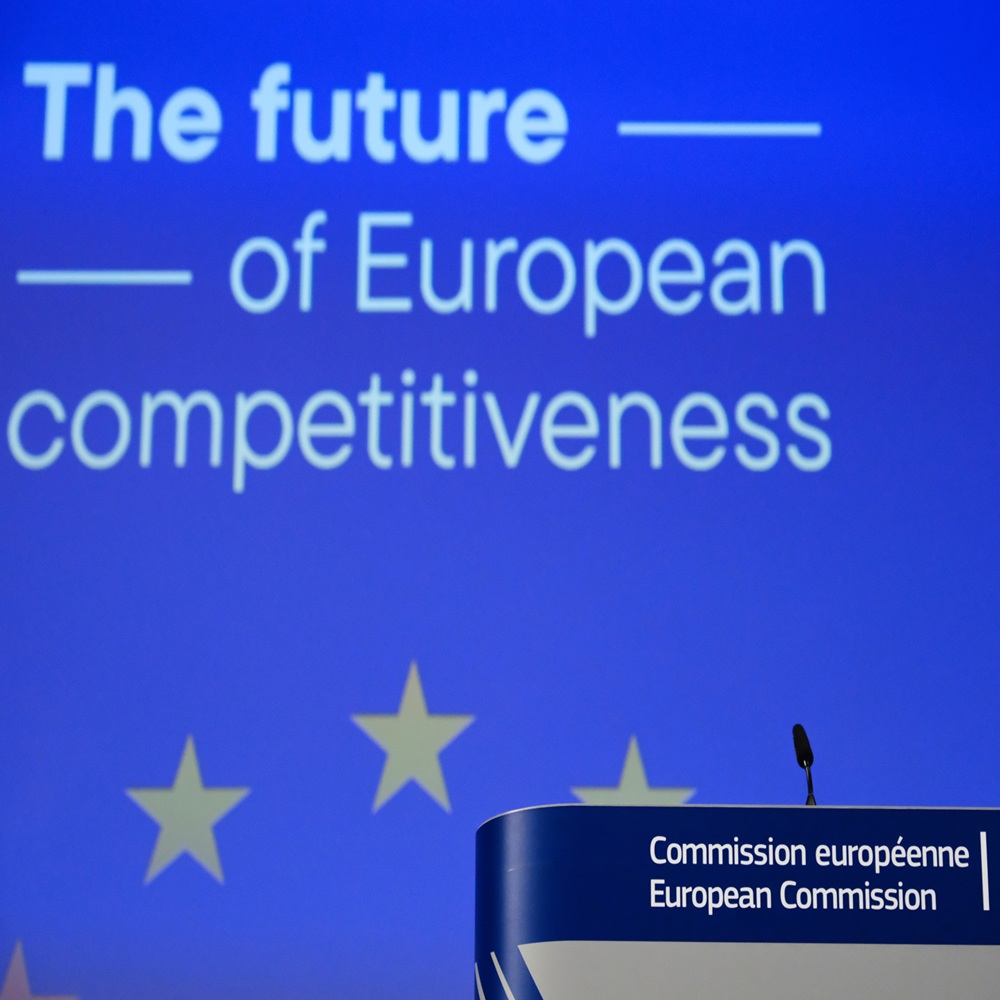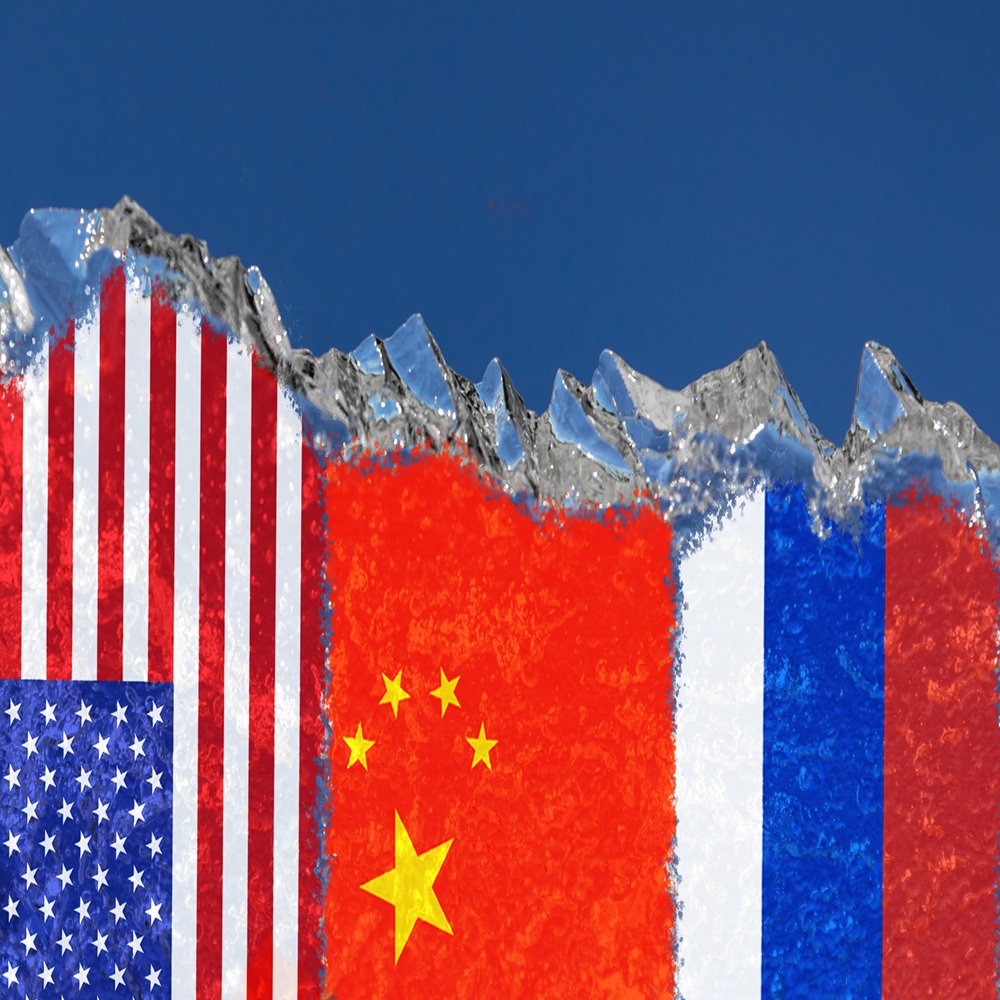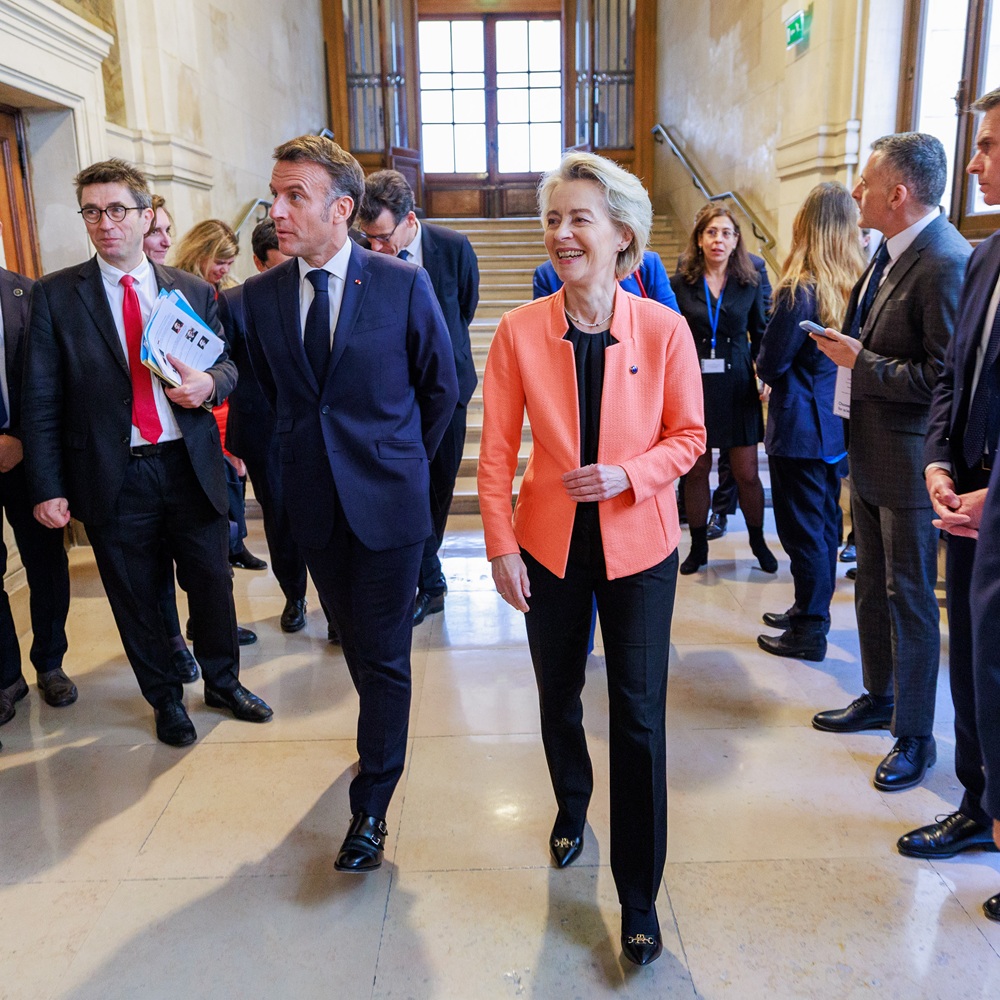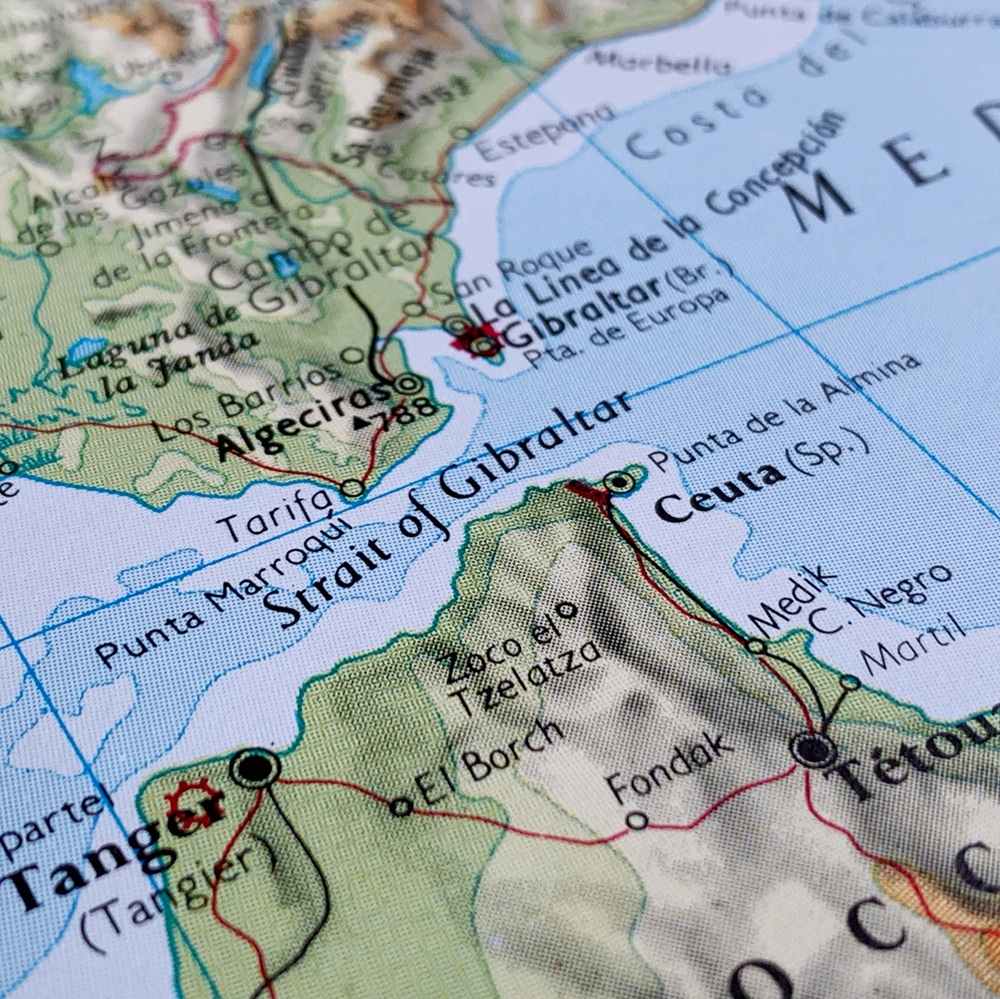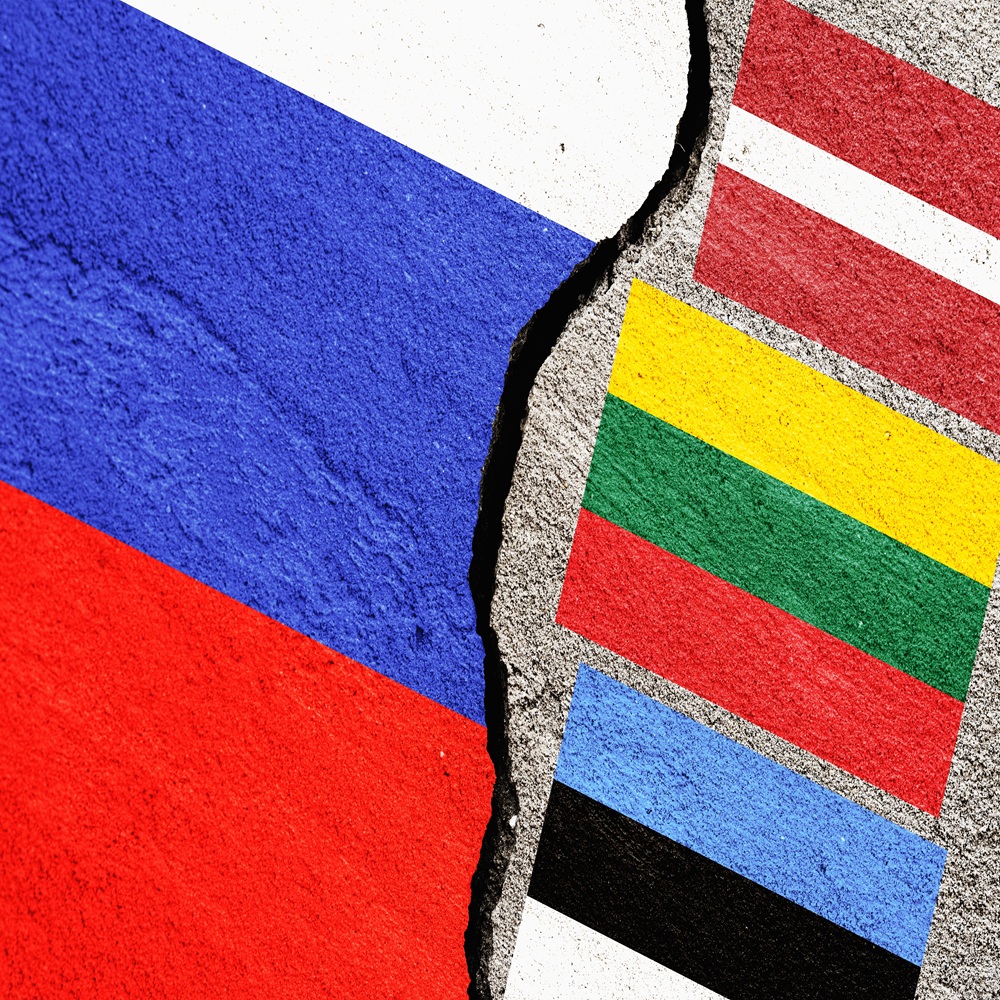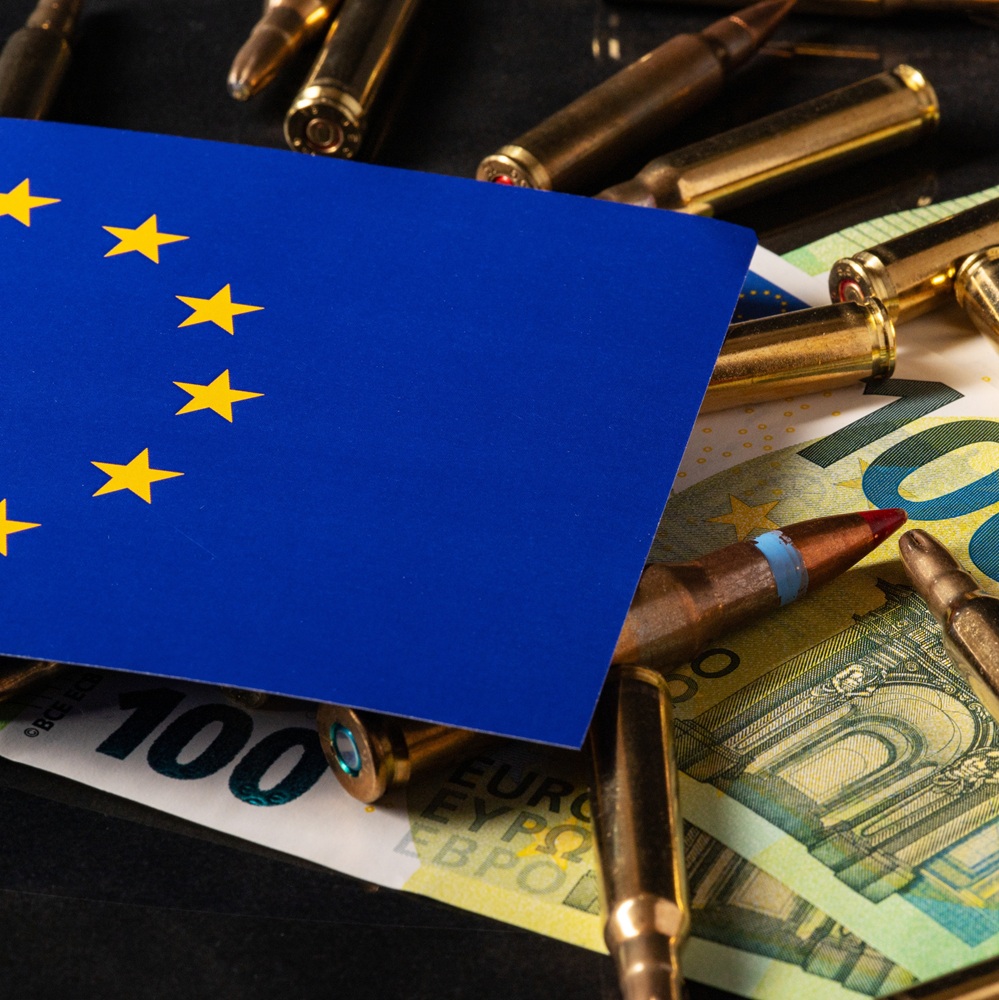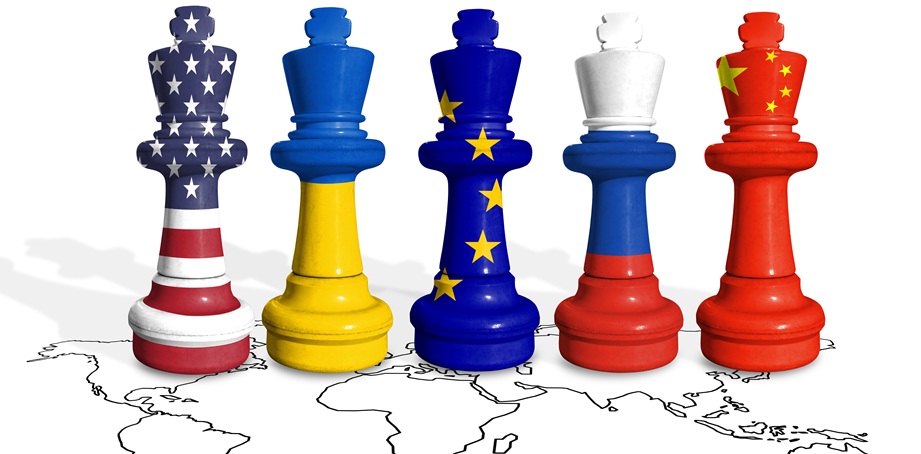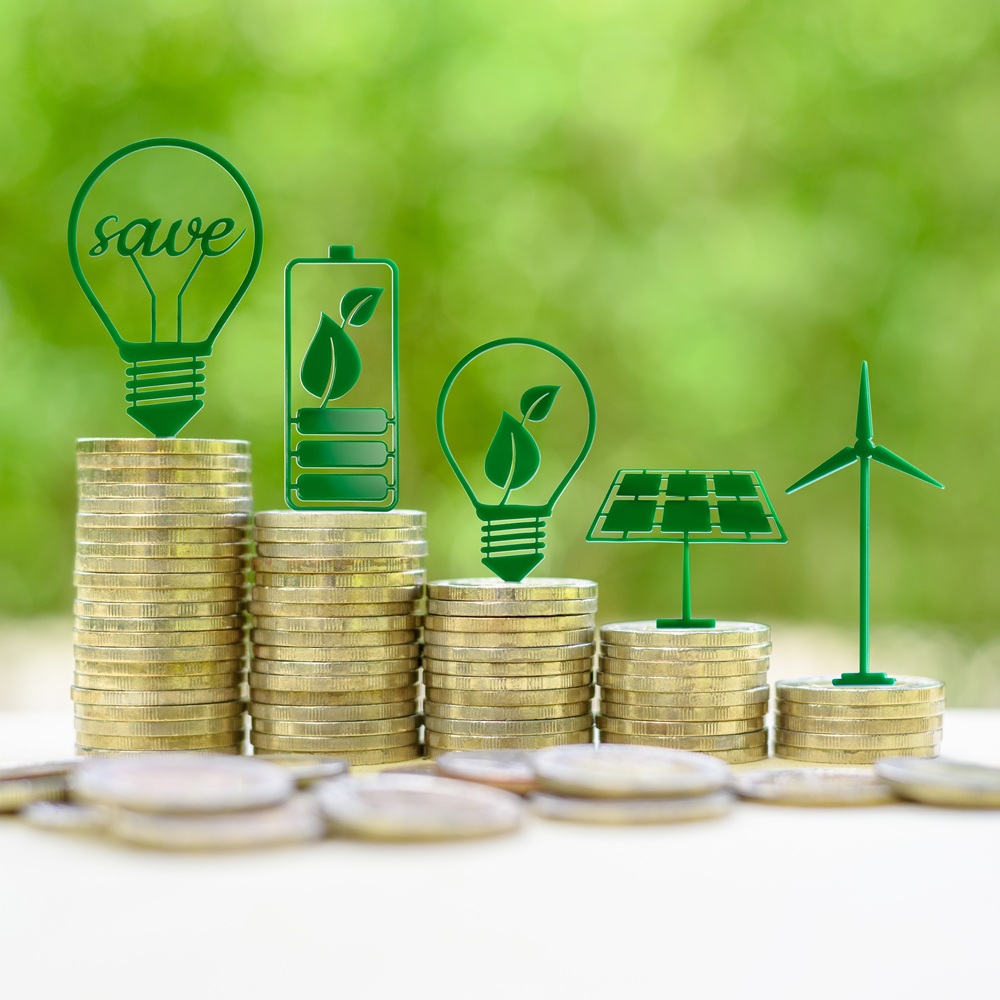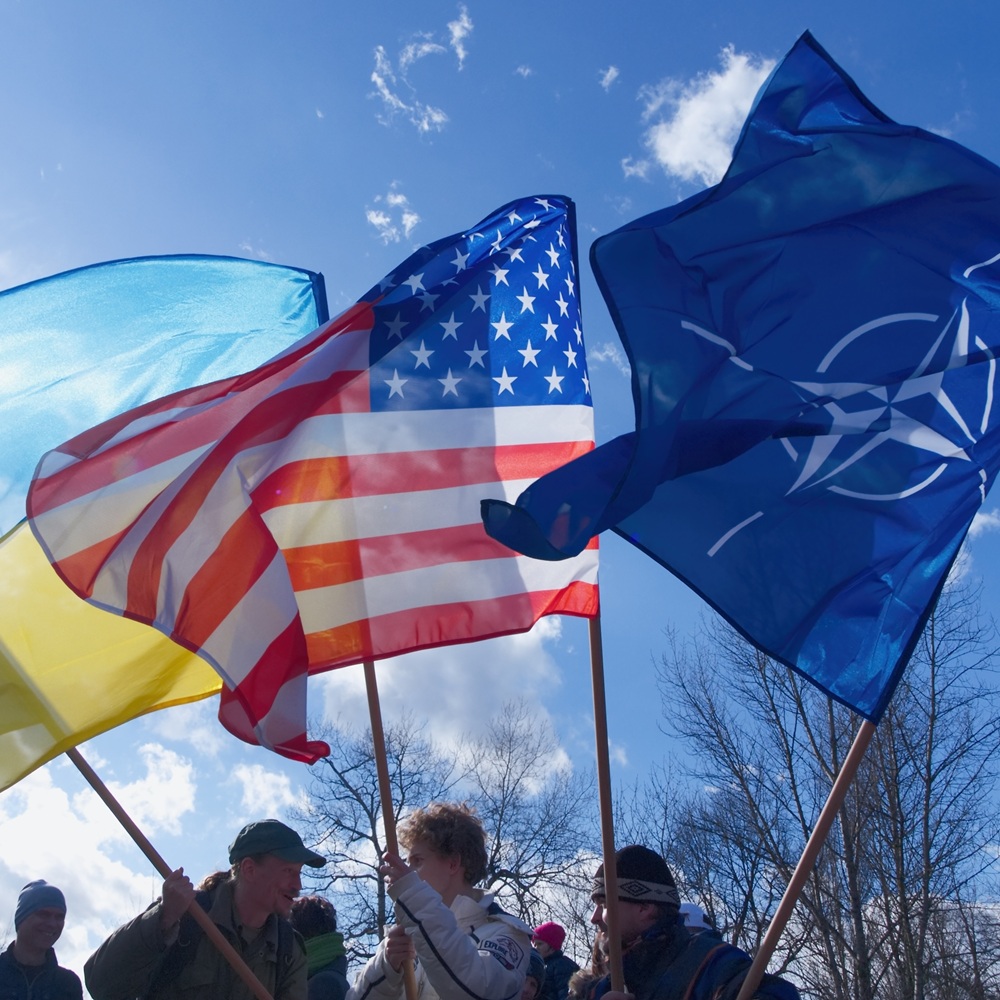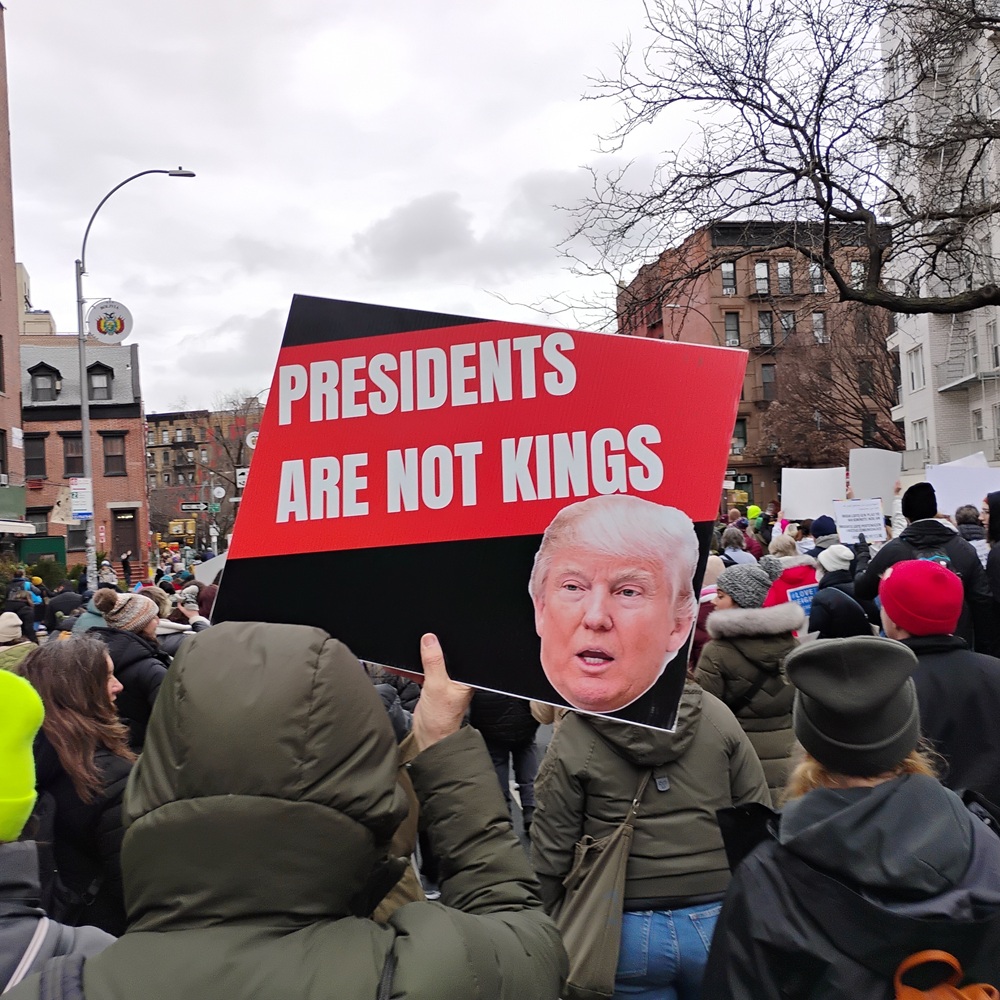
Donald Trump, the revolt of the lower middle class and the next phase of European integration
by Klaus Welle
한국어로 읽기 Leer en español In Deutsch lesen Gap اقرأ بالعربية Lire en français Читать на русском Abstract The defining political shift of our era is the revolt of the lower middle class. Much more exposed than the better-off to the succession of crises in recent years—from the financial crisis to uncontrolled migration, from Covid-19 to Russia’s aggression against Ukraine—the lower middle class is turning to the populist right and its promise of protection by closure. Unlike the US first-past-the-post system, the EU’s institutional framework emphasises compromise and cross-party cooperation and thus offers a critical buffer against this wave of disruption. But this is not enough to protect our post-1945 political order, which is based on parliamentary democracy, the rule of law and European integration, from both internal and external threats. The EU needs a bold agenda that focuses on competitiveness, growth, migration and defence, all of which are crucial to strengthening our continent. Introduction1 Once is an accident, twice the new normal. With his electoral success, Donald Trump is the new reality in the US, not just an aberration. Trump obviously understands his time better than anybody else, which ensured him his comeback as president of the US, elected by the people against seemingly overwhelming legal and political resistance. He is the new rule of the game, like it or not. The revolt of the lower middle classWhat is the new reality? The party political system in the US and Europe has been fundamentally transformed by the revolt of the lower middle class. Voter analyses in several European countries give a clear picture: in France, Marine Le Pen and the National Rally (Rassemblement National) represent the ‘défavorisés’ like no other party and have replaced in that function the traditional left. Le Pen is successful in the former Communist heartland and mining territory of northern France, where she also assured her own seat in parliament (Ipsos 2024). Similarly, Alternative for Germany (Alternative für Deutschland, AfD) is electorally over-represented among workers and the unemployed and those with below average incomes and education (Moreau 2024a). And the Freedom Party of Austria (Freiheitliche Partei Österreichs, FPÖ) rallies the workers too (Moreau 2024b). This should not come as a big surprise. Right-wing populist parties have been recognised in political science as unconventional workers’ parties for more than a decade (Rydgren 2013). And the transformation of the political space in Europe has been ongoing for more than a decade as well. European Parliament elections are an excellent monitor of the overall situation in Europe and the member states. The outcome of the 2024 European Parliament elections shows us a political space that is basically divided into three parts. One-third of the members now sit on the left, organised in the Green, Socialist and Left groups; a good third are in the centre, encompassing the Liberals and the Christian Democrat European People’s Party (EPP); and close to a third now belong to the populist and radical right (European Parliament 2024). In the US, Trump’s success was assured in 2016 through gains in the ‘rustbelt states’, formerly the Democrat Party’s heartland. In 2020 Joe Biden was able to narrowly turn the tide. With his credibility among workers—acquired over decades through close cooperation with the trade unions—he was able to achieve what presidential candidates from liberal New York and California, Hillary Clinton and Kamala Harris, could not. The Republican Party today is the Make America Great Again Party. It is the party of Donald Trump. The Republican Party of Ronald Reagan and George Bush does not exist anymore. The party that used to represent the highly skilled today represents and owes its electoral success to the lower-skilled working class. ‘National security Republicans’ have lost their political home. Why is the lower middle class revolting? The lower middle class can be identified as those whose economic situation is tense. In other words, they have no financial buffer and anything unexpected happening can push them over the edge. In the US, this group, known as those living ‘from paycheque to paycheque’, is considered to comprise 25% to 30% of the population. A single paycheque not arriving might force people belonging to this group to sell their car; several paycheques not arriving might oblige them to sell their house (Bank of America Institute 2024). Ever since the financial crisis that started in 2008, we have gone in Europe from crisis to crisis. The drawn-out financial crisis was followed by uncontrolled migration as a consequence of Russia’s bombardment of big cities in Syria, and this was followed by Covid-19 and then Russia’s aggression against Ukraine, which caused major spikes in energy and food prices and another massive wave of migration. What we call a ‘crisis’ might equally be considered a lack in performance of the system overall and an indication of increasing loss of control. Russia is being aggressive militarily and in other ways because it believes it can do so and get away with it. External borders prove time and time again to be porous. After the Second World War, the German economy grew by an average of about 5% per year; but in the last five years, this has dropped to 0% and even into the negative. What can be weathered by the better-off is an existential challenge for the lower middle class. If you are not already on the housing ladder by luck of birth, it is increasingly difficult to get onto. The social elevator is stuttering. And while migration is perceived by the upper middle class as the promise of affordable personal services today and care in old age later, for the lower middle class it means competition for affordable housing and state services, and the risk of decreasing educational standards for children in their lower-income living areas. German sociologist Andreas Reckwitz (2020) describes the experience of the lower middle class as one of a double devaluation: economic and cultural. It is economic because formerly well-paid industrial workers are falling increasingly behind the new university-educated service class. And it is cultural because their system of traditional values is regarded as outdated and destined to be superseded. From a horizontal to a vertical understanding of the party political system The traditional horizontal classification of parties on a left to right axis is very misleading now. To understand what is happening, we need to replace the traditional horizontal classification with a vertical one based on social status, income and education. On the basis of the 2021 German federal election and data provided by the Bundestag (data no longer available online) and others (Focus online 2021), we can construct such a vertical system for Germany: 1. Greens and liberals represent younger voters, with a very good income in the case of the liberals and an average income, but outstanding level of education, when it comes to the greens, the new party of the Bildungsbürgertum (the very well-educated). These voters can together be considered the upper middle class and the most dynamic part of society.2. The traditional people’s parties, the Christian Democrats and the Social Democrats, become more popular the older the cohort, with their popularity rocketing among those above 70 years old. The income levels of the voters of these parties are average, as is their education, and this voter base is shrinking. These parties represent the middle class.3. The Left (Die Linke) is over-represented among academics and the unemployed; its electorate has a below-average income. The extreme-right AfD is over-represented among workers, the unemployed and people of working age. The educational levels of these voters are low, and their household incomes are below average. The Left and the AfD both represent the lower middle class. The part of the lower middle class that is represented by the populist right is being promised protection by closure. Right-wing populism is therefore ‘social nationalism’. But it is not just about the programme. Bringing that new coalition of various social groups together is facilitated by charismatic leadership: Trump is a charismatic leader in the sense of Max Weber (1921); and he finds his European equivalents in the likes of Nigel Farage, Boris Johnson, Marine Le Pen and Viktor Orbán. Moreover, the dominance of social media over the traditional media has dramatically decreased the cost of political organisation and provided a chance for newcomers to establish themselves. Social media have also normalised hate, which was banned from the traditional media for very good reasons after the dramatic experiences of racism, National Socialism and Communism in the twentieth century. Political parties based on portraying political adversaries as enemies in the tradition of Carl Schmitt (2007) are profiting more than any other from these new tools. What differentiates Europe from the US? Party political competition in the US If we are observing a revolt of the lower middle class in both the US and Europe, why has the impact been so different up to now? In the US the first-past-the-post system forces everybody to integrate into one of the two major political parties, the Democrats and the Republicans. Both parties therefore represent very large coalitions, which essentially serve an electoral purpose only and cannot be considered programme parties. The fight for content takes place mainly within, among the different caucuses organised in Congress. What you would find in the European Parliament in the EPP, the European Conservatives and Reformists, the Patriots and the Sovereigntists is, in the US, all assembled in one political family, the Republicans. Equally, what you would find in the liberal Renew group, the Socialists and Democrats, the Greens and the Left in Europe has to cohabit within the Democrat Party in the US. The Republican Party can be understood as a broad political coalition which has effectively fallen under the control and leadership of what in Europe might rather be considered the line of Viktor Orbán and the Patriots. The other tendencies are still there but marginalised. They can no longer determine the overall direction but might still be sufficiently strong in Congress to block decision-making or align with the other side when they regard policies as being against their core convictions, such as creating unsustainable debt levels, or on matters related to national security and defence.Europe and its national electoral systemsEuropean states are not immune either. The British, the French and the Hungarian electoral systems provide an oversized seat result for the relatively strongest party, and this increases the opportunities of the extremes. Brexit can be considered one outcome of this. The current political stalemate in France, where the extreme right and the extreme left are holding the system hostage, is another. In systems of pure proportional representation, by contrast, you need more than 50% of the votes for one party or a coalition of several parties to take effective political control. In a first-past-the-post system, as in the US, 20%–30% of the electorate is more than sufficient to take over one of the major political parties and, with that, to potentially run the country. Pure proportional systems therefore provide better protection against a right-wing or left-wing populist takeover. The EU political system On the federal level of the EU on the other hand, the incentives are there for cooperation across the political centre. Decisions in the Council need an oversized qualified majority; the election of a European Commission president by the European Parliament requires an absolute majority of the members elected to the house. These majorities can regularly be found only through cooperation across the aisle and by transcending the traditional left–right schism. The desire to hold important political offices in the EU, therefore, requires a willingness to compromise and forces political parties that are more on the right or on the left to look towards the centre. The final vote on the von der Leyen Commission was carried by a large cross-cutting alliance of the Christian Democrat EPP, the liberal Renew and the Socialists, complemented by the constructive right, centred on Italian Prime Minister Giorgia Meloni, and the constructive left, led by the German Greens. The more radical elements of both the European Conservatives and Reformists and Green groups voted against. The institutional system has a strong impact on the political culture in the EU, which is a culture of cooperation. The political system favours the creation of unity—as the condition for stability on a historically, geographically and culturally divided continent—and therefore the centre. The absence of permanent coalitions and the lack of fixed roles of majority and minority in the division of power in the EU create the opportunity to integrate those on the very right and the very left who are not opposed to the system as such and whose primary aim is not to destroy it: the constructive right and the constructive left. Contrary to the US, where the destructive and anti-system elements can dominate the rest of their respective coalitions, inside the EU that destructive right and left find themselves isolated unless they stop being the system opposition. That is why Ursula von der Leyen was well advised to integrate Raffaele Fitto from Brothers of Italy (Fratelli d’Italia) as vice-president of the European Commission and, at the same time, to continue a constructive dialogue with the co-leader of the Green group Terry Reincke on the importance of climate change policies and actions to preserve the rule of law. Brothers of Italy had not only supported the new asylum pact, in contrast to Viktor Orbán, but had also supported Ukraine in a steadfast fashion, including in the vote to ensure Ukraine profits from the interest on Russian assets. Brothers of Italy is part of the constructive right, stabilising the political system of the EU. Is the EU therefore safe? The EU is a federal union of citizens and states and therefore dependent on support in each and every member state. It is only as strong as its weakest link. Even though, on average, support for EU institutions is close to historical highs and well above the support levels for national institutions, that is not enough (EU 2024). Before Brexit the EU’s weakest link in terms of overall support was the UK. Nowadays its weakest link is France, which is paralysed by the combination of a destructive right, on the one hand, and on the other, a destructive left which, in the form of France Unbowed (La France Insoumise), is holding the socialists and greens hostage. And both extremes are cooperating in the destabilisation of the state. That smells like Weimar. What needs to be done? An agenda for the next phase of European integration An agenda for strength In the worlds of Trump, Vladimir Putin and Xi Jinping, strength is the only thing that counts. Internationally and geopolitically, we are back in the world of nineteenth-century power politics. The rules of the game have changed, and the quicker we understand this the better. We are threatened at the same time from the inside and from the outside. From the inside, by the destructive nationalist populist right and left that are trying to hollow out the political order, established after 1945, based on parliamentary democracy, the rule of law and European integration. From the outside, by aggressive nationalist power politics. And more often than not, these two are connected. The seatbelts need to be fastened. Defending ourselves from threats both inside and outside has to start with the recognition that we are confronted with real issues, not just imagined ones. Hyper-inflation was real and is still stored in today’s price levels. The accumulated inflation during Joe Biden’s four-year term was above 20% (US Bureau of Labour Statistics n.d., author’s calculations), and it will not have been very different in Europe. Growth rates are very low, while debt is rising, and with it the difficulty of states to intervene in times of absolute need. Uncontrolled mass immigration happened. Our capacity to defend our continent is seriously compromised. International respect comes from strength, not from weakness. This is not a case for mass psychotherapy, but political action: the political agenda has to change. The European Parliament nowadays plays a key role in setting the agenda for the upcoming legislative term. Ursula von der Leyen had to negotiate with all the political forces of good will about the programme for the next five years to have any chance of being elected by an absolute majority of the members of the house. The need for the Commission president to negotiate the programme also changes the role of the European political foundations. The Wilfried Martens Centre for European Studies has contributed hundreds of precise policy proposals to the process of reflection in a document entitled The 7Ds for Sustainability. This text centres on defence, debt, digitalisation, demography, democracy, decarbonisation and de-risking globalisation in order to enrich the debate and help set a new agenda (Wilfried Martens Centre for European Studies n.d.). The outcomes of the European elections matter, as they should. With the Greens and the Liberals having together lost more than 50 seats and the so-called progressive majority between the Liberals, Greens, Socialists and the far left having disappeared, European Commission priorities for this legislature have markedly changed. Competitiveness and security, comprising both defence and migration, including border protection, have become the top two priorities. This is underpinned by the different composition of the European Commission and the European Council. With half of the members of both institutions coming from the EPP and the EPP occupying the centre space in the European Parliament as well, concerns about competitiveness, migration and defence, critical to strengthening our continent, which is being challenged from both within and without, now have a stronger voice. An agenda for growth: implementing the Draghi report Like every other policy paper, the Letta and Draghi reports can and are being discussed in detail. But no one can dispute the competence of Mario Draghi in matters monetary and economic. The Draghi report will therefore provide a most important reference point. His report comprises six basic truths that will inspire the legislative proposals of the European Commission in this term, even more so as it was requested by the European Commission president herself. Draghi brings everybody face to face with his or her responsibilities. From my personal reading, his report can be summarised as follows: • Investment is the precondition for future growth. Europe is lagging behind in high-tech investment and has largely lost the new digital economy race. This can be identified as the key reason for the difference in per capita growth between the US and the EU. Mid-tech–based industry, such as the car industry, which provides our current economic backbone, is coming under increasing competitive pressure from China.• Without investment, annual productivity growth falls behind. Europe could maintain and improve its living standard by considerably increasing female and older-age participation in the workplace. Worsening demographics make that quantitative input increase more difficult.• The EU has to return to the strategy of scaling through the development of its own internal market, especially in the less-integrated areas of the service sector.• The Banking Union and the Capital Markets Union are critical to assisting high-tech investors in their efforts to scale beyond national boundaries. Given that high-tech means not only high return but also high risk, venture capital is necessary to accompany that growth.• We have regulated for risk and not for opportunity, as is typical for ageing societies. The regulatory burden has to be reduced.• Common public debt has to come in as a residual answer, dependent in volume on the progress in the above-mentioned areas. Consensus on common European debt could be achieved in the area of defence, which could be considered a European public good. Common European financing would also contribute to more equal burden sharing. An agenda for migration Migration is at the core of right-wing populist parties’ growth. It brings together social and cultural challenges: social challenges in the form of competition for scarce public services and support, and cultural ones in the form of a challenge to traditional constructions of national and cultural identity. Here society is falling apart. What is a promise of improved personal services for the upper middle class and the liberal and green parties representing them is, for the lower middle class, a threat of lower salaries and increased competition for state services, including education. Experiences during the negotiations to form the current Swedish and Finnish governments showed that a tough policy on migration was the one area where populist parties were not ready to adapt or compromise. Preliminary voting analysis from the European Parliament demonstrates that while right-wing populist parties show some diverging views on economics, they clearly differentiate themselves from other political forces on the cultural axis of the political divide (Welle and Frantescu 2025). We have experienced a radicalisation of our political space following the events of mass migration, both in the Mediterranean and following Russia’s aggression in Syria and Ukraine. Russia even actively tries to destabilise its neighbours by transporting refugees to their common borders or via Belarus. Denmark is the only country in the EU that has managed to reduce established right-wing populist parties back to single digits. It has done so by establishing a consensus in society on a tough migration policy that is being continued by its current Social Democrat–led government. At the same time, Denmark represents a country with one of the highest standards of societal development. ‘Going to Denmark’ is even a reference in international development policy. Danish migration policy will therefore need to be studied in more detail so as to understand how far it can provide guidance for the EU as a whole or not. Speedier implementation of the migration pact voted on in the European Parliament in April 2024 therefore has to be a prime priority. But it cannot be the last step. Integration capacity has to become critical to migration policy. An agenda for defence Those who cannot defend themselves are inviting their stronger neighbours to aggress them. A look at maps of Russia over the last 500 years shows us that Russia has expanded continuously at the expense of its weaker neighbours—from basically the city territory of Moscow to becoming the largest state on earth. The military submission of its neighbours is the Russian business model. The peaceful and voluntary integration of the European space, based on the rule of law, is the business model of the EU. These concepts are now geographically colliding. And the grey zone in between, at the very least, is now in danger of Russian aggression and occupation, as demonstrated in Ukraine, where Russia is trying to reintroduce the logic of nineteenth-century empire to the European continent. The US will focus its own efforts increasingly on Asia and the attempt to contain China. Europe will therefore have to provide the lion’s share of its own conventional defence. This can only be effectively organised by making use of the possibilities provided by the EU. The Martens Centre has provided a plan in 10 steps—the European Defence Pyramid—on how to achieve a viable European defence under changed geopolitical circumstances. Starting with more basic ideas at the beginning, it has now been outlined in considerable detail with the help of external experts in The 7Ds for Sustainability – Defence Extended (Ciolan and Welle 2024). Progress is already visible. The Martens Centre suggested the creation of the office of a European defence commissioner and a standing defence committee in the European Parliament. Both are now reality. The proposed increase in financial support for military mobility has now been achieved through the decision of the European Commission to allow the use of regional funds for this purpose. And the new defence commissioner has suggested the creation of an ‘EU DARPA’2 for military research, as developed in the concept papers. Living in dangerous times Europe is being simultaneously challenged internally and externally: internally by right-wing populist parties, which have now conquered nearly 30% of the political space; externally by Russia, which is trying to reintroduce the nineteenth-century rules of empire through military aggression with at least the benevolent acceptance of China. These challenges are not unrelated. Some of the populist parties on the right and left openly make the case for China and Russia. Viktor Orbán’s Hungary has even been rewarded by China with massive investments and the status of an ‘all-weather partner’. Ever since the collapse of the Soviet Union in 1991, we have been living in a world of cooperation. System competition between East and West was replaced by globalisation. System seemingly did not matter anymore. Production went wherever it was the cheapest. Communist China became the capitalists’ best friend in exchange for the transfer of superior technology. In analogy to Lenin, China sold the capitalists the rope with which to hang themselves. The price paradigm replaced the security paradigm. With China now so strong that it can and does challenge the US economically and politically for number-one status globally, and strongly on the rise militarily, this phase has ended. China is preparing for the military strangulation, if not occupation of Taiwan, as demonstrated by its ever more menacing sea exercises around the island every year. Russia waged a war against Ukraine only days after establishing a ‘no limits partnership’ with China, testing the global order established after 1945 when conquering and annexing the territory of a weaker neighbour was outlawed. The West is being challenged both in Asia and in Europe. To defend our European way of life we need to be strong economically and militarily. We need to close the rifts in our societies and constructively end the revolt of the lower middle class. System competition is back, and the security paradigm has replaced the price paradigm. Cite: Welle, K. (2025). Donald Trump, the revolt of the lower middle class and the next phase of European integration. European View, 0(0). https://doi.org/10.1177/17816858251345566 Footnotes 1. This article is a revised version of an article that originally appeared on the website of the research centre Groupe d’études géopolitiques on 19 March 2025 with the title ‘Trump and the next phase of European integration’. See https://geopolitique.eu/en/2025/03/19/after-trump-the-next-phase-of-european-integration/. Used by permission.2. The Defense Advanced Research Projects Agency is a US Department of Defense agency focused on developing breakthrough technologies for national security. References Bank of America Institute. (2024). Paycheck to paycheck: What, who, where, why? 22 October. https://institute.bankofamerica.Com/content/dam/economic-insights/paycheck-to-paycheck-lower-income-households.pdf. Accessed 24 April 2025.Ciolan I. M., Welle K., eds. (2024). The 7Ds for sustainability – Defence extended. https://www.martenscentre.eu/publication/the-7ds-defence-extended/. Accessed 24 April 2025.EU. (2024). Standard Eurobarometer 102 – Autumn 2024. https://europa.eu/eurobarometer/surveys/detail/3215. Accessed 24 April 2025.European Parliament. (2024). European Parliament 2024–2029. Constitutive session. https://results.elections.europa.eu/en/european-results/2024-2029/. Accessed 24 April 2025.Focus online. (2021). Wer wählte wie? Die Analyse. Frauen und Rentner lassen Union abstürzen, die Jungen bestimmen die Kanzlermacher. 27 September. https://www.focus.De/politik/deutschland/bundestagswahl/analyse-der-bevoelkerungsgruppen-wer-waehlte-wie-akademiker-und-reiche-waehlen-gruen-renter-spd_id_24280744.html. Accessed 24 April 2025.Ipsos. (2024). Sociologie des électorats – Législatives 2024. 30 June. https://www.ipsos.com/sites/default/files/ct/news/documents/2024-06/ipsos-talan-sociologie-electorats-legislatives-30-juin-rapport-complet.pdf. Accessed 24 April 2025.Moreau P. (2024a). AfD: The German far-right at a dead end. Fondapol, 6 November. https://www.fondapol.org/en/study/afd-the-german-far-right-at-a-dead-end/. Accessed 24 April 2025.Moreau P. (2024b). The FPÖ and the challenge of Europe: Ideological radicalism and electoral constraints in Austria. Fondapol, 29 October. https://www.fondapol.org/en/study/the-fpo-and-the-challenge-of-europe-ideological-radicalism-and-electoral-constraints-in-austria/. Accessed 24 April 2025.Reckwitz A. (2020). Society of singularities. Cambridge: Polity.Rydgren J., ed. (2013). Class politics and the radical right. London: Routledge.Schmitt C. (2007). The concept of the political. Chicago: University of Chicago Press.CrossrefUS Bureau of Labour Statistics. (n.d.). CPI inflation calculator. https://www.bls.gov/data/inflation_calculator.htm. Accessed 24 April 2025.Weber M. (2010). Politik als Beruf [Politics as a vocation], 11th edn. Berlin: Duncker & Humblot.Welle K., Frantescu D. (2025). (Forthcoming study on voting behaviour in the European Parliament in the 2019–24 legislature).Wilfried Martens Centre for European Studies (n.d.). Publications: The 7Ds. https://www.martenscentre.eu/publication/#the-7ds. Accessed 24 April 2025.









